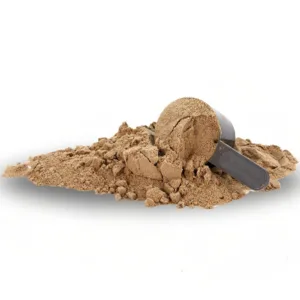Protein shakes have become increasingly popular, embraced by fitness enthusiasts, individuals seeking weight management solutions, and those prioritizing overall health. But with a plethora of options available, understanding the nuances of protein shakes can be overwhelming.
This comprehensive guide will explore protein shakes in detail, covering their fundamental purpose, diverse benefits for various goals (weight loss, muscle gain, general well-being), different protein types, and who can benefit most from incorporating them into their dietary regimen.

Table of Contents
- Protein Shakes: An Introduction to a Popular Dietary Supplement
- Protein Shakes and Their Benefits for Diverse Fitness Goals
- Protein Shakes for General Health: Enhancing Overall Well-being
- Identifying Individuals Who Can Benefit from Protein Shakes
- A Comprehensive Guide to Different Protein Types
- Diverse Plant-Based Protein Options
- Choosing the Optimal Protein Shake: Key Factors to Consider
- Potential Side Effects and Important Considerations
- Conclusion: Making Informed Decisions About Protein Shakes
Protein Shakes: An Introduction to a Popular Dietary Supplement
Protein shakes are dietary supplements formulated to deliver a concentrated dose of protein in a convenient, easily consumable form. They typically come as powders designed to be mixed with water, milk, or other liquids, creating a shake. Ready-to-drink versions are also readily available. These shakes serve as an efficient way to augment protein intake, especially when faced with time constraints or the need for a rapid post-exercise protein boost.
The Importance of Protein: A Fundamental Macronutrient Explained
Protein stands as one of the three essential macronutrients, alongside carbohydrates and fats. It plays a multifaceted and indispensable role in numerous physiological processes, including:
Given protein’s vital role, adequate intake is non-negotiable for good health. This is precisely where protein shakes can prove to be a valuable asset to a well-rounded diet.
Understanding the Primary Purpose of Consuming Protein Shakes
The core purpose of protein shakes is to supplement and enhance dietary protein intake. While obtaining nutrients from whole foods is always the ideal scenario, it’s not always feasible or sufficient to meet individual requirements. Here’s a detailed look at why people incorporate protein shakes into their diets:
Protein Shakes and Their Benefits for Diverse Fitness Goals
Protein shakes offer a spectrum of benefits tailored to specific fitness objectives. Let’s delve deeper into how they can contribute to weight loss, muscle gain, and the promotion of general health.
Protein Shakes for Weight Loss: A Strategic Dietary Tool

When embarking on a weight loss journey, protein shakes can be a valuable asset due to the following mechanisms:
Optimizing Protein Shake Consumption for Weight Loss
Protein Shakes for Muscle Gain: Providing Essential Building Blocks

For individuals aiming to build muscle mass, protein shakes are virtually indispensable. Here’s a breakdown of their contribution to muscle growth:
Optimizing Protein Shake Consumption for Muscle Gain
Protein Shakes for General Health: Enhancing Overall Well-being

Even without specific weight loss or muscle gain goals, protein shakes can still positively impact overall health:
Incorporating Protein Shakes for General Health
Identifying Individuals Who Can Benefit from Protein Shakes

While generally safe for consumption by most individuals, certain groups can derive particular benefits from incorporating protein shakes into their diets:
A Comprehensive Guide to Different Protein Types
Protein shakes are derived from various protein sources, each possessing unique characteristics and suitability for different needs. Let’s explore some of the most prevalent types:
1. Whey Protein: A Fast-Absorbing, Complete Protein

-
-
- Rapid Digestion: Whey protein is quickly absorbed by the body, making it ideal for post-workout consumption.
- Complete Protein Source: Contains all nine essential amino acids, necessary for various bodily functions.
- Rich in Branched-Chain Amino Acids (BCAAs): Particularly important for stimulating muscle protein synthesis and promoting muscle growth.
-
Types of Whey Protein:
2. Casein Protein: A Slow-Digesting Protein for Sustained Release

-
-
- Slow Digestion: Casein forms a gel-like substance in the stomach, slowing down digestion and providing a gradual release of amino acids over several hours.
- Complete Protein Source: Contains all nine essential amino acids.
-
3. Soy Protein: A Plant-Based Complete Protein Option

-
-
- Plant-Based: Suitable for vegetarians, vegans, and those with dairy allergies or lactose intolerance.
- Complete Protein: Contains all nine essential amino acids.
- May Offer Additional Health Benefits: Contains isoflavones, which have been linked to potential cardiovascular and bone health benefits.
-
4. Egg Protein: A Lactose-Free Animal Protein

-
-
- Complete Protein: Contains all nine essential amino acids.
- Medium Digestion Rate: Absorbed at a moderate pace, slower than whey but faster than casein.
- Lactose-Free: Suitable for individuals with lactose intolerance.
-
Diverse Plant-Based Protein Options
Choosing the Optimal Protein Shake: Key Factors to Consider
With a vast array of protein shake options available, selecting the most suitable one requires careful consideration of individual needs, goals, and preferences. Here are crucial factors to guide decision-making:

Potential Side Effects and Important Considerations
While protein shakes are generally safe for most individuals when consumed in moderation, it’s essential to be aware of potential side effects and considerations:
Conclusion: Making Informed Decisions About Protein Shakes
Protein shakes can be a valuable asset to a well-rounded diet and exercise regimen, offering a multitude of benefits across various fitness and health goals. They provide a convenient and efficient means of increasing protein intake, catering to a wide range of individuals, from athletes and fitness enthusiasts to those seeking weight management solutions or simply aiming to enhance their overall well-being.
It’s crucial to remember that protein shakes are dietary supplements, not substitutes for whole, unprocessed foods. They should be integrated into a balanced diet abundant in fruits, vegetables, whole grains, and lean protein sources.
By thoroughly understanding the diverse types of protein, their specific benefits, potential side effects, and key considerations for choosing the right product, individuals can make informed decisions about whether protein shakes are appropriate for them and how to effectively incorporate them into their lifestyle.
Consulting with a healthcare professional or a registered dietitian is always recommended, especially for individuals with specific health concerns or conditions. They can offer personalized guidance tailored to individual needs, ensuring safe and effective utilization of protein shakes to achieve desired health and fitness outcomes.
If protein shakes are integrated into a routine, opt for high-quality products that align with goals and embark on a journey towards a healthier and stronger self!


Leave a Reply